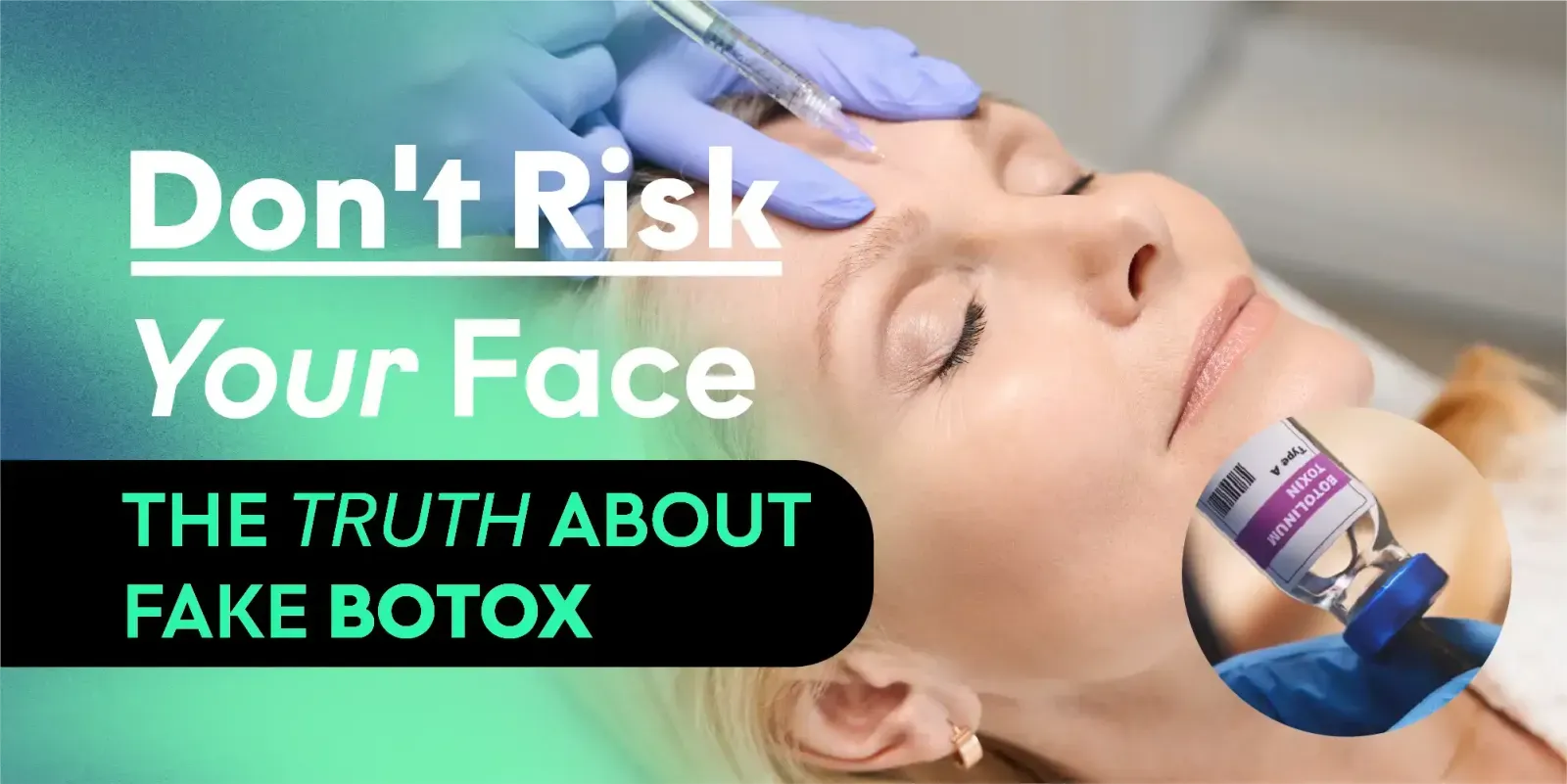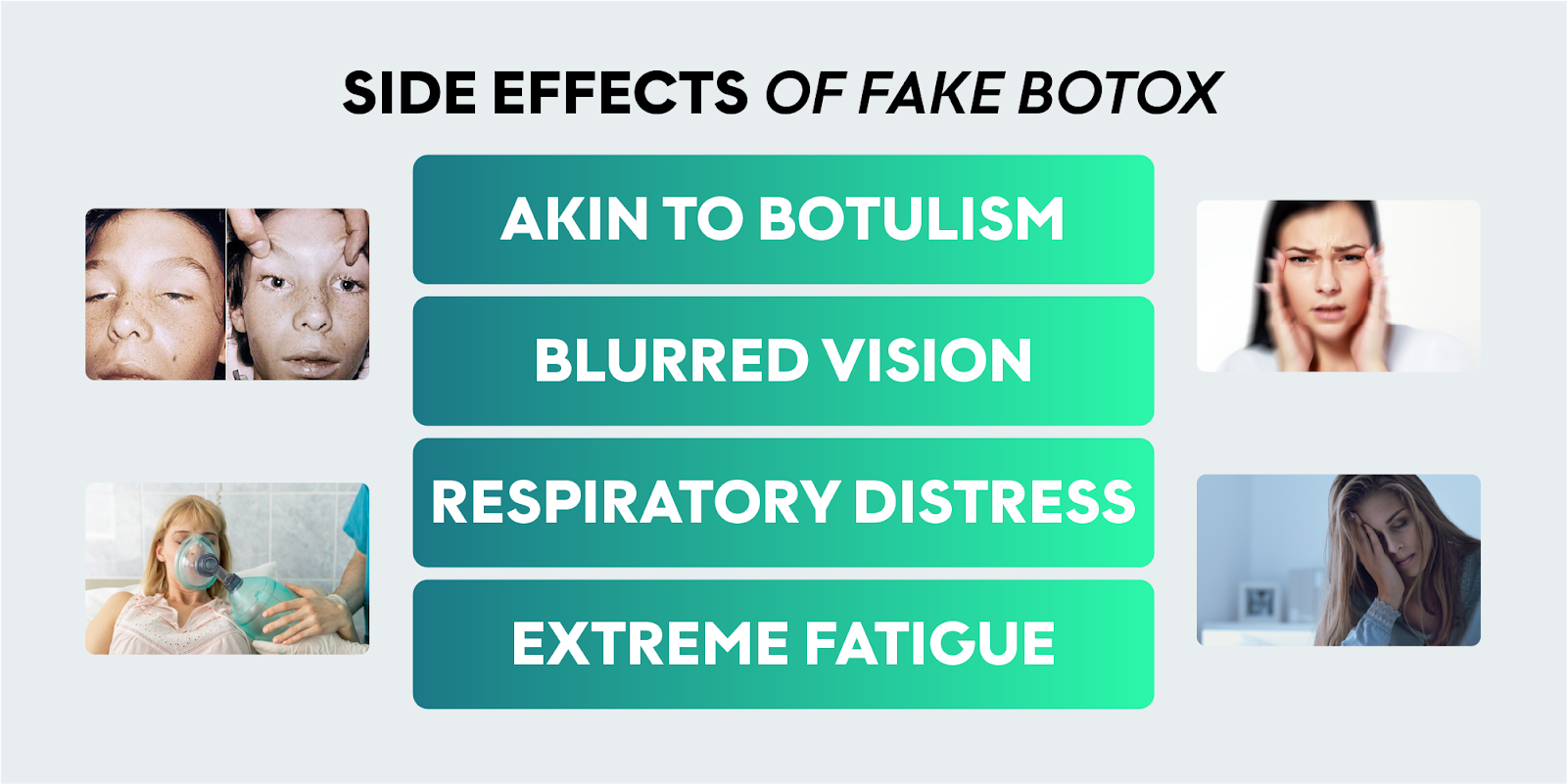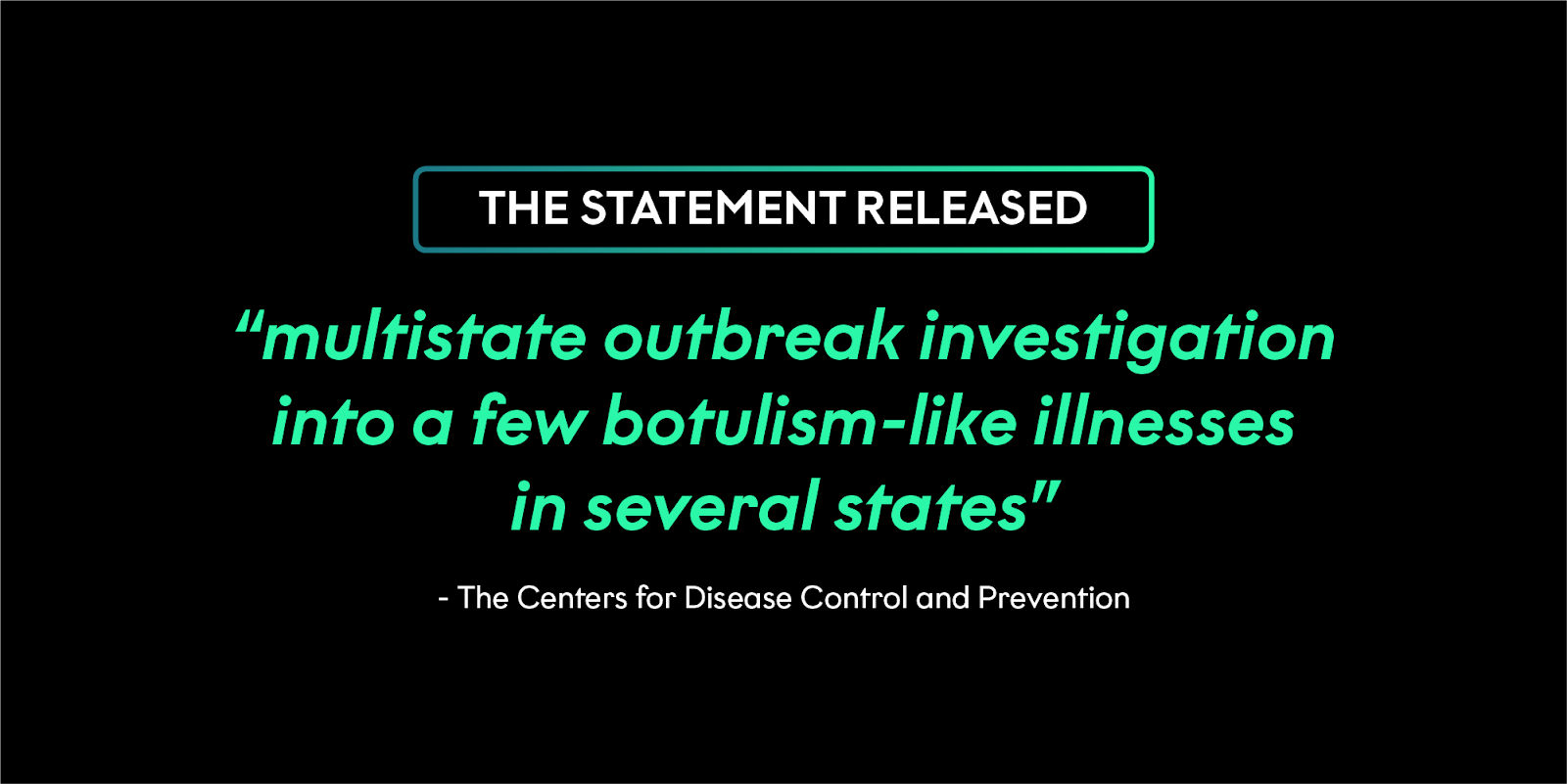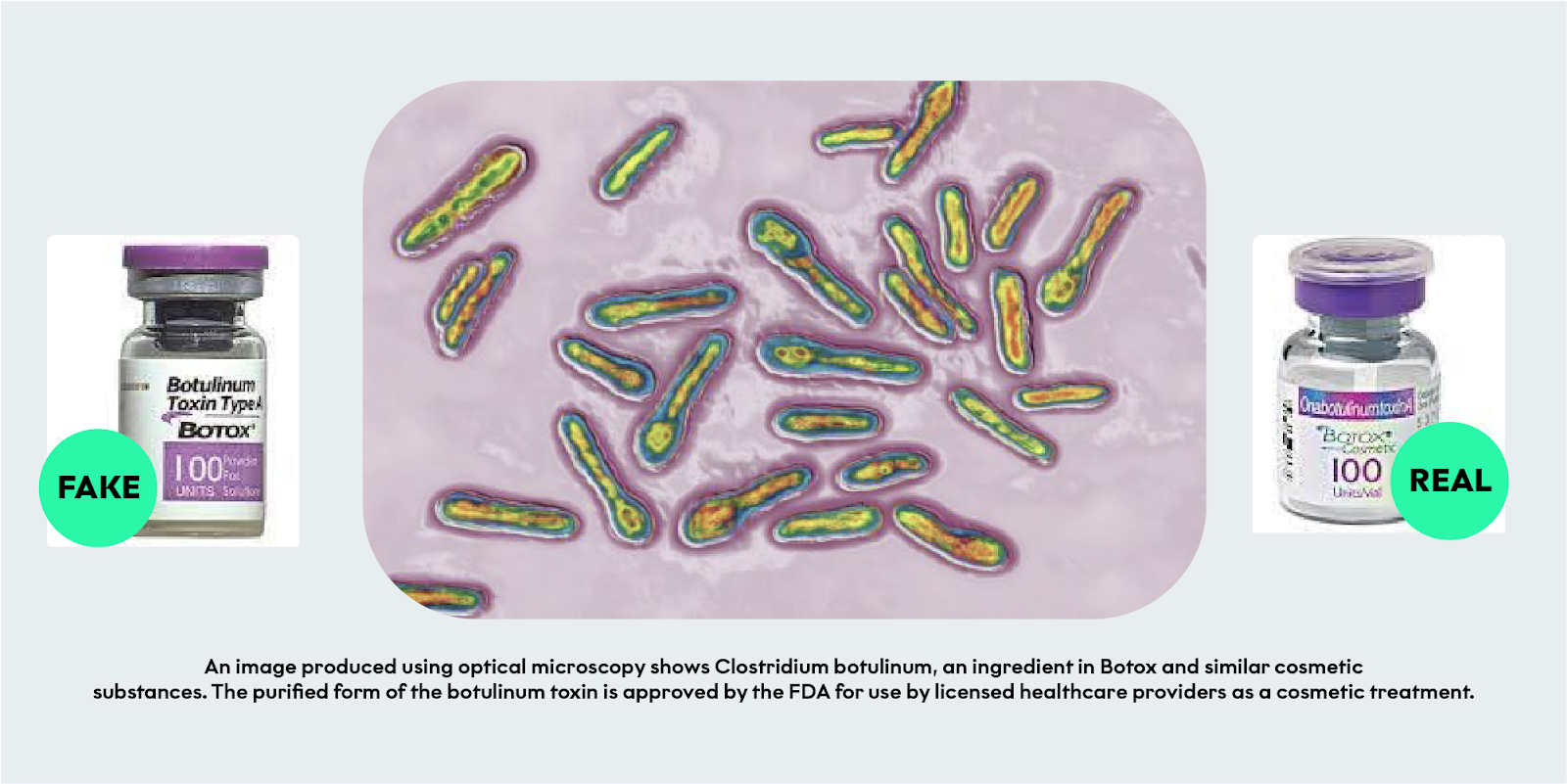
Botox has become one of the most popular cosmetic treatments in the world. Once reserved for celebrities and high-end clinics, it’s now widely available and more affordable than ever. While this is great news for people who want to smooth wrinkles or refresh their appearance without surgery, it has also opened the door to a dangerous trend — fake Botox.
Recently, the Centers for Disease Control and Prevention (CDC) issued an alert to doctors about counterfeit Botox products circulating in the market. Reports from several states in the U.S. show that patients have been hospitalized after receiving fake injections. This is not just a minor issue — it’s a serious health risk that can cause life-threatening complications.

What Is Fake Botox?
When we talk about fake Botox, we mean counterfeit versions of genuine products. Words like “fake,” “knock-off,” or “counterfeit” all describe something made to look real but without the same quality or safety standards.
If you buy a fake handbag, the worst that happens is you waste your money. But fake Botox is completely different — it can harm your health, put you in the hospital, and even be deadly.
Real Botox is a brand of botulinum toxin made by Allergan, a well-known pharmaceutical company. Other trusted brands include Dysport™ (by Galderma) and Xeomin® (by Merz). These companies are strictly regulated, invest billions in research, and must pass rigorous safety testing by the FDA, European Medicines Agency, and other global regulators before their products reach the public.
Fake Botox, on the other hand, comes from unregulated sources. There’s no way to know what’s inside, how it was made, or whether it’s sterile. Some unethical providers knowingly use these products to cut costs, while others may not even realize they’ve purchased counterfeit goods.

CDC’s Warning on Fake Botox
In its recent statement, the CDC said it is investigating multiple cases of illnesses linked to counterfeit Botox injections. These injections were often given outside of licensed medical offices.
Health departments in Illinois and Tennessee have already reported cases, with patients ending up in the hospital. Additional cases have been found in Kentucky and Washington. The symptoms these patients experienced were similar to botulism — a rare but serious illness that can cause paralysis.
The CDC’s message to the public is clear: if you see a Botox deal that seems too cheap to be true, think twice. The savings are not worth the risk to your health.

Why Fake Botox Is So Dangerous
The side effects of fake Botox can be severe. Patients who received counterfeit injections have reported:
-
Blurred vision
-
Trouble breathing
-
Extreme fatigue
-
Muscle weakness
These symptoms happen because botulinum toxin affects the nervous system. In real, regulated Botox, the dose is carefully measured and safe. In fake versions, the amount and purity are unknown, and contamination is possible. Without proper testing, there’s no way to guarantee safety.
How to Protect Yourself from Fake Botox
The best defense against fake Botox is doing your research. Before booking an appointment, check the provider’s credentials and reviews. A professional, reputable clinic should have:
-
Licensed medical staff
-
Clear pricing (not suspiciously low)
-
Direct sourcing from official manufacturers
-
Traceable lot numbers and safety seals on products
If you’re unsure, ask your provider where they get their Botox and whether they can show proof of authenticity. A legitimate clinic will have no problem sharing this information.
Why Price Matters
While it’s tempting to go for the cheapest option, bargain Botox often comes with a hidden cost — your safety. Reputable clinics may not be the cheapest, but they invest in genuine products, skilled practitioners, and proper safety measures.
Think about it this way: Botox is going into your face and body. Choosing the wrong provider can cause lasting damage. Saving a little money is never worth the risk of serious health problems.
Is Fake Botox Becoming More Common?
Unfortunately, yes. With the growing popularity of cosmetic treatments worldwide, the counterfeit market has grown too. This is a billion-dollar black market industry, and it’s difficult for regulators to track every fake product.
While authorities are working to enforce safety laws, the sheer number of clinics and providers makes it challenging to control. That’s why your choice of clinic is so important — it’s the first and most effective step in protecting yourself.
Sisu Clinic’s Approach to Safety
At Sisu Clinic, patient safety is always the top priority. Our clinics are doctor-led, and we work directly with official manufacturers — no middlemen, no grey-market products. Every vial of Botox we use is traceable, with official lot numbers and anti-counterfeit measures.
We also believe in transparency. Our pricing is competitive but fair, reflecting the cost of genuine products and expert care. With more than 25 clinics across three countries, we have long-standing relationships with trusted suppliers.
Your Health Comes First
The CDC’s recent warning is a reminder that not all Botox is created equal. Counterfeit products are a real and growing threat. While fake handbags or watches may only hurt your wallet, fake Botox can hurt your health — or worse.
If you’re considering Botox, choose quality over cost. Do your homework, pick a licensed and reputable clinic, and never be afraid to ask questions about the products being used.
At the end of the day, your safety, appearance, and peace of mind are worth far more than any “too good to be true” deal.
Final Tip: If you’re unsure whether your Botox provider is legitimate, remember this rule: If it’s too cheap, there’s probably a reason. Protect your face, protect your health, and trust only in safe, authentic treatments.
